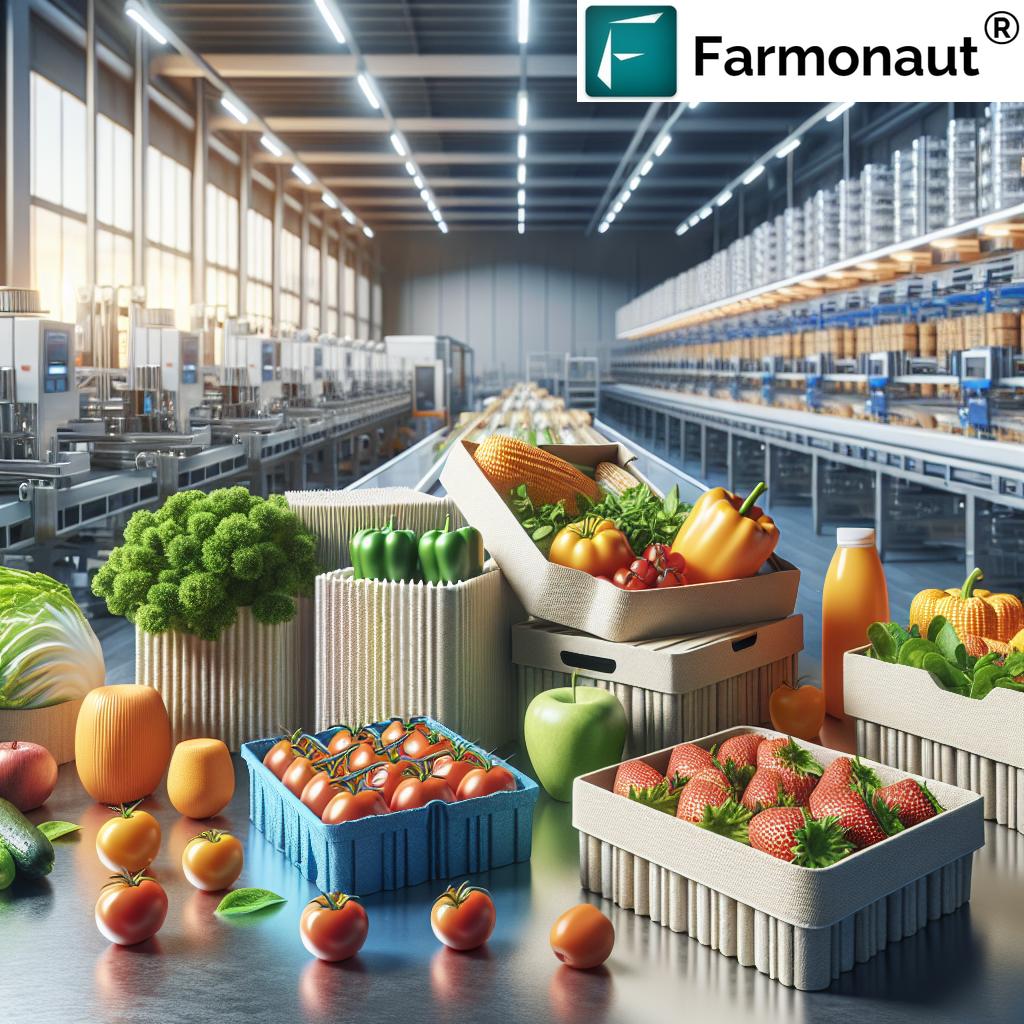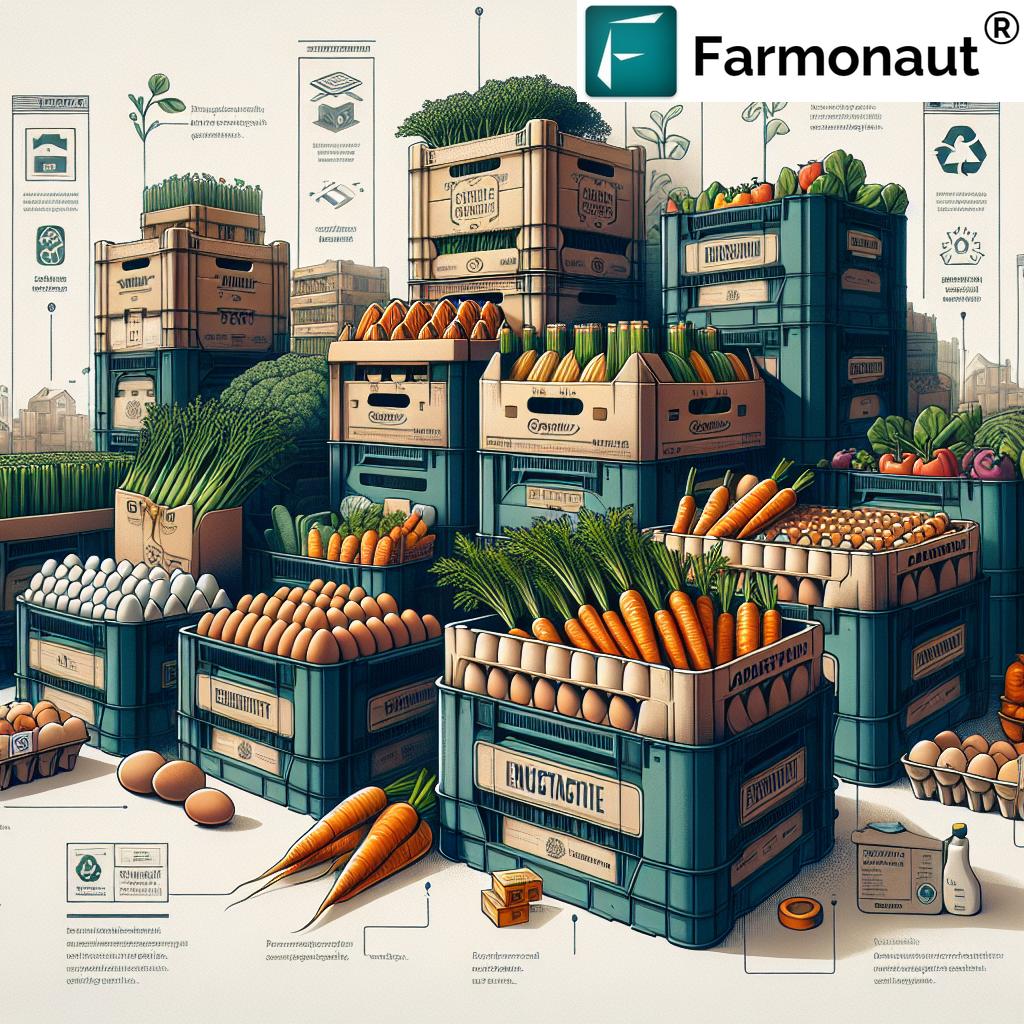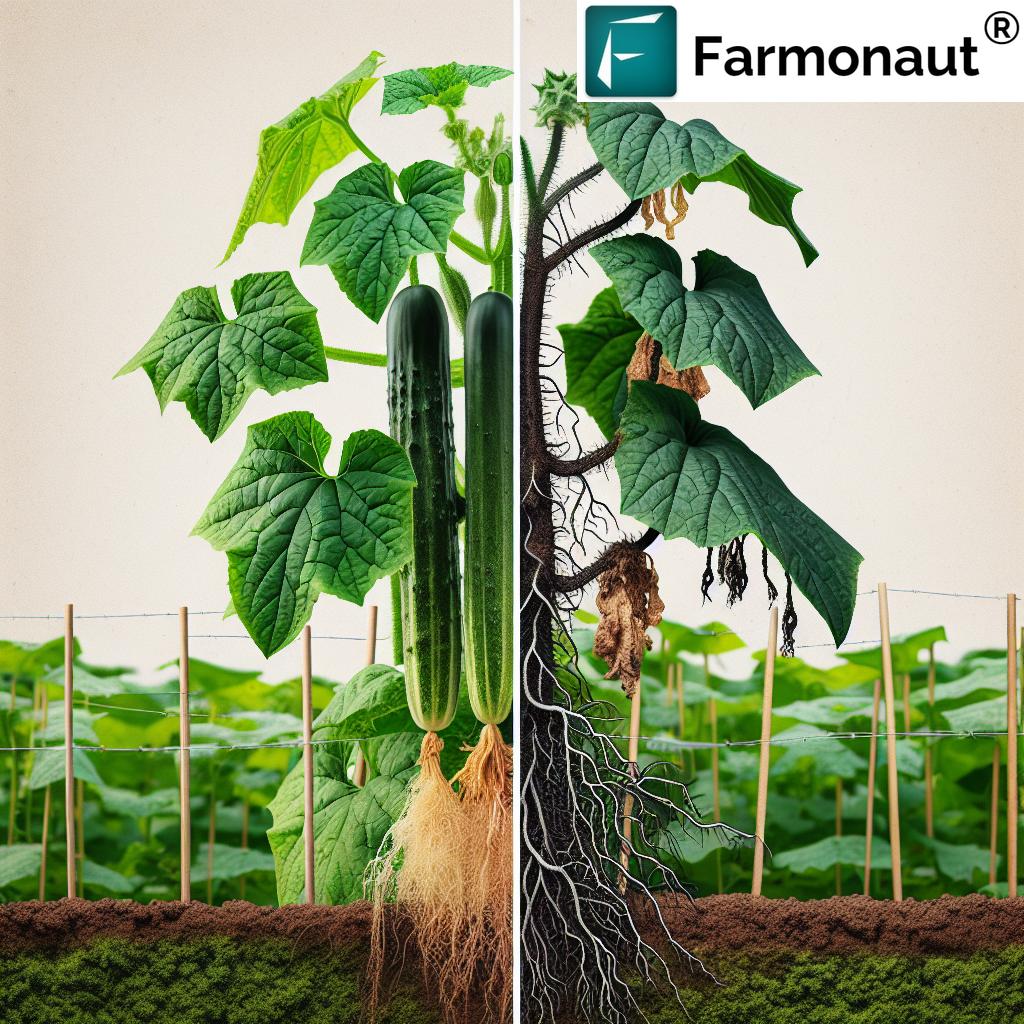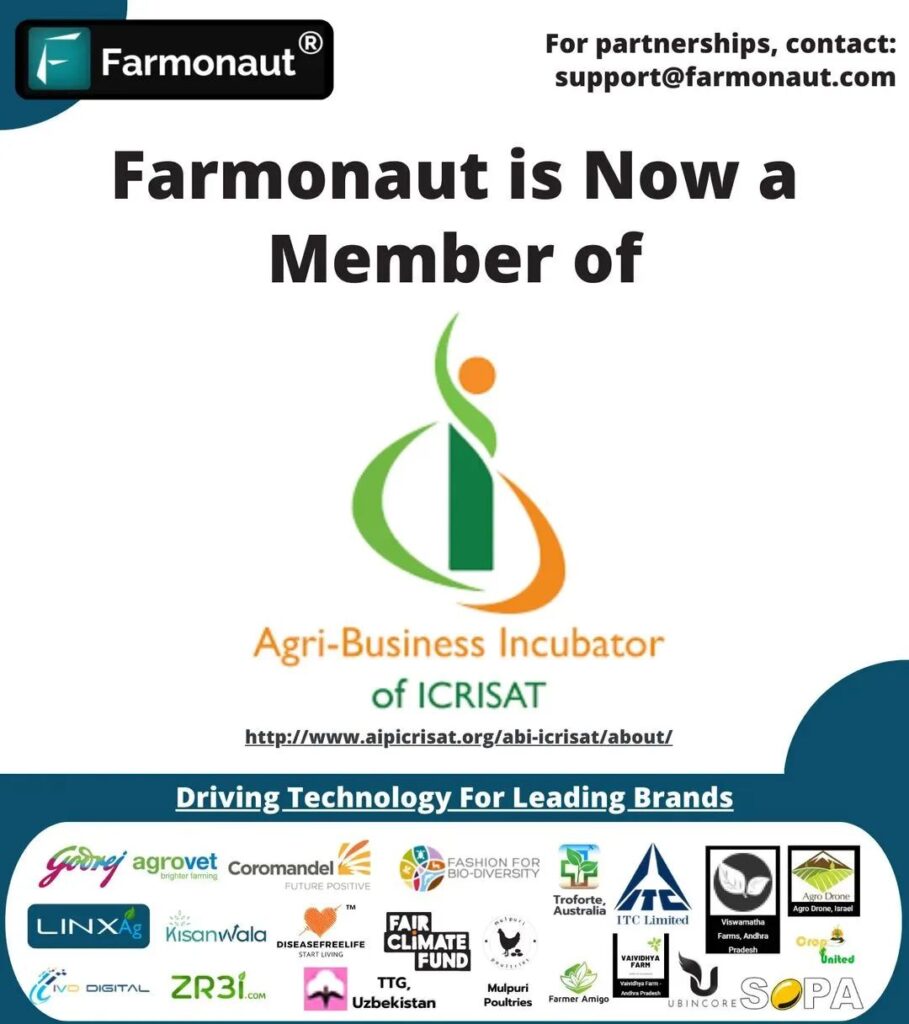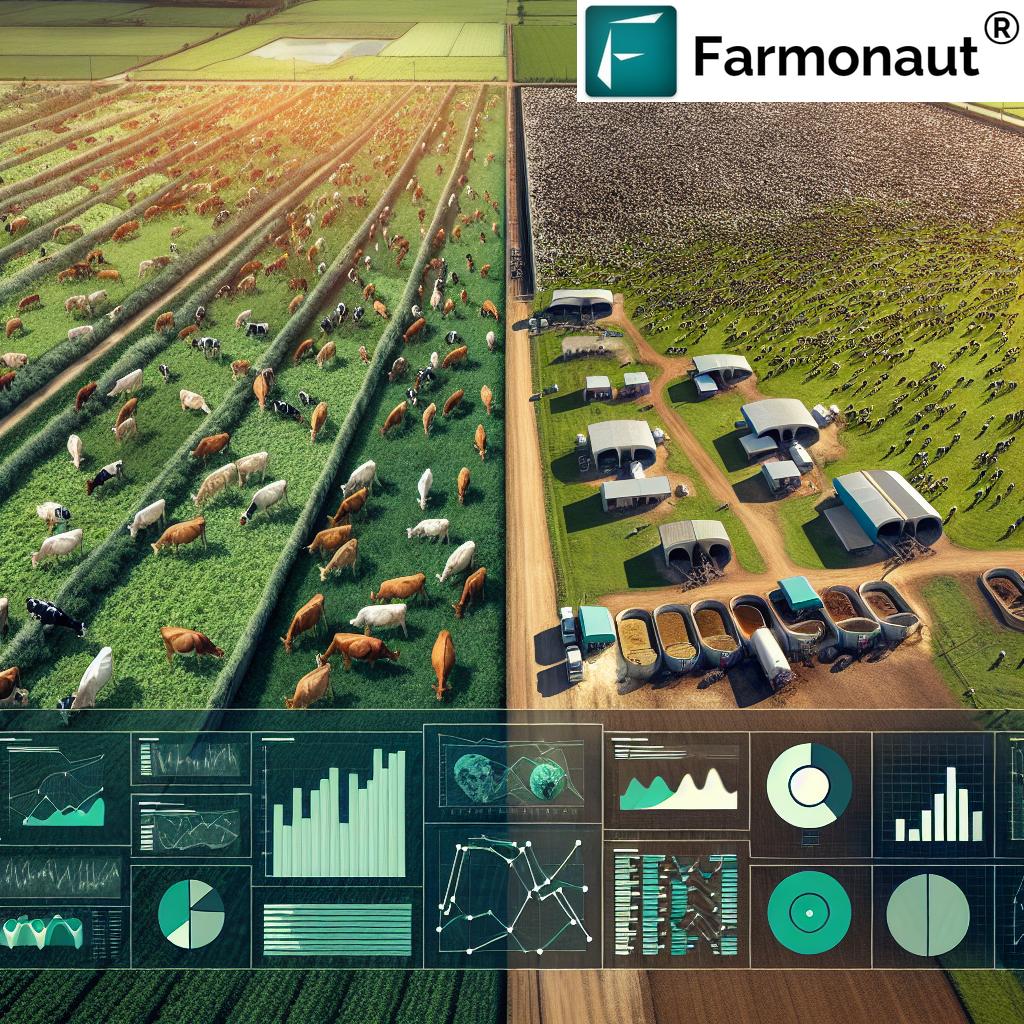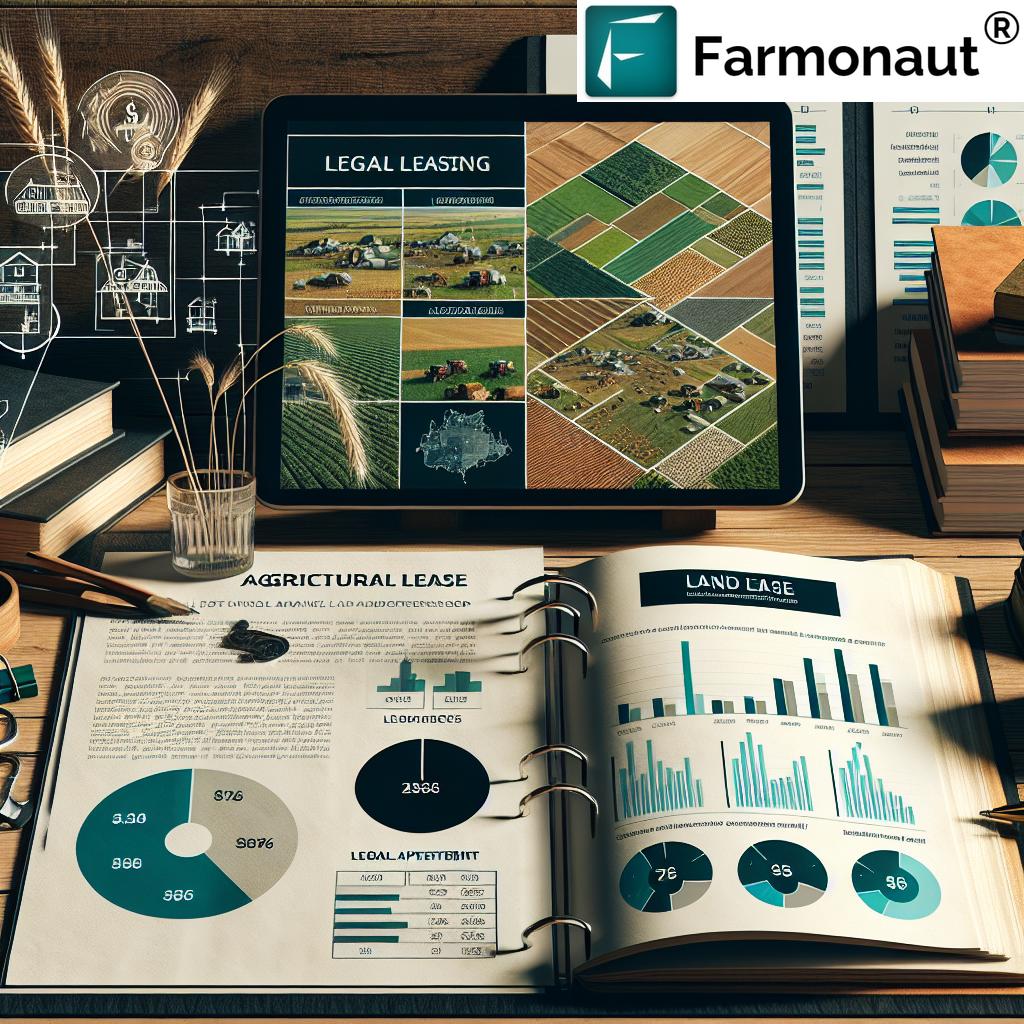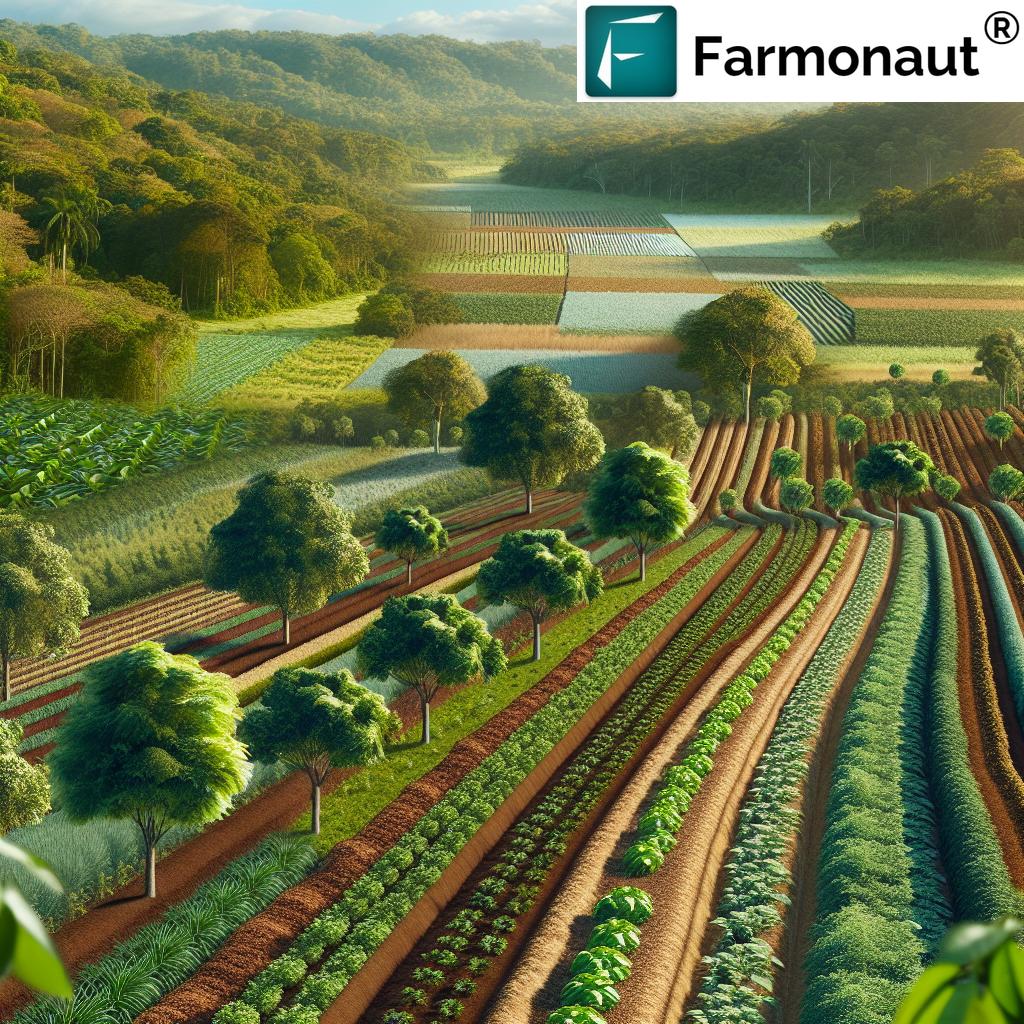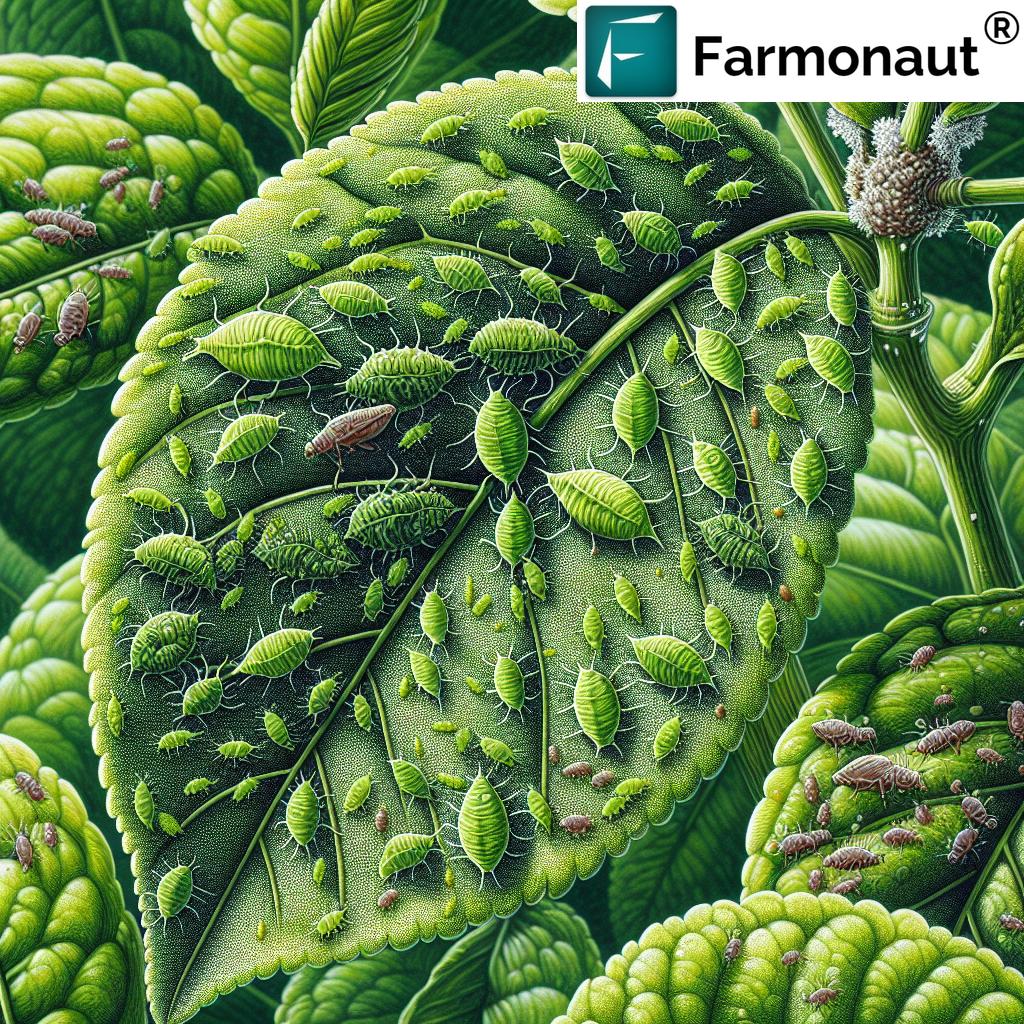Table of Contents
- Introduction: The Role of Agriculture Packaging
- The Significance of Agricultural Packaging
- Trivia: Surprising Packaging Facts
- Types of Agricultural Packaging
- Materials in Agricultural Packaging
- 7 Powerful Innovations in Agricultural Packaging Solutions
- Comparative Innovations Overview Table
- Key Sustainability Considerations in Agriculture Packaging
- Innovative Agricultural Packaging Technologies
- How Farmonaut Supports Sustainable Agriculture
- Economic Implications of Agricultural Packaging
- Trivia: Did You Know?
- Tips for Optimizing Packaging to Reduce Food Waste
- FAQ: Agricultural Packaging & Waste Reduction
- Conclusion: The Future of Agricultural Packaging Solutions
Agriculture Packaging: 7 Powerful Innovations Reducing Waste
“Over 30% of global food waste is linked to inadequate agricultural packaging and preservation technologies.”
Agricultural packaging is far more than just a protective shell; it’s a transformative force at the heart of modern agriculture, forestry, and farming. Innovative agricultural packaging solutions preserve the freshness and quality of fruits and vegetables, minimize waste, safeguard products from harvest through transportation and storage, and amplify the marketability of every good. As we strive for sustainability and efficiency, adopting technology-driven, sustainable packaging for produce has never been more crucial.
In this guide, we’ll explore the most advanced materials, technologies, and methods that are reducing food waste in agriculture—from innovative biodegradable packaging materials to intelligent systems that protect the supply chain.
The Significance of Agricultural Packaging
The significance of agricultural packaging lies at the intersection of quality preservation, waste reduction, and marketing. Effective packaging goes beyond the basics of protecting fruits and vegetables during transport. It shields them from physical damage, contamination, and spoilage during processing, storage, and distribution. The right material and design ensure that goods reach the consumer in the best possible condition, thus maintaining freshness and minimizing losses across the supply chain.
Furthermore, packaging serves as a key marketing asset. Through clever printing and design, it communicates information about the brand and the product, directly influencing purchasing decisions. In essence, agricultural packaging solutions create a bridge between farming excellence and outstanding consumer experiences.
“Over 30% of global food waste is linked to inadequate agricultural packaging and preservation technologies.”
Types of Agricultural Packaging
Agricultural packaging can be strategically categorized to address the unique requirements of harvested goods as they journey from the farm to the consumer. Each type serves a distinct purpose in handling, transportation, and storage.
-
Primary Packaging: Directly contacts the produce to protect and maintain its freshness.
- Examples: Plastic bags for fruits, vacuum-sealed pouches for perishables, cartons for eggs.
-
Secondary Packaging: Aggregates several primary packages for efficient movement and bulk handling.
- Examples: Cardboard boxes containing multiple bags of produce, crates of vacuum-packed items.
-
Tertiary Packaging: Designed for bulk packaging for agricultural products, optimizing storage and transportation.
- Examples: Pallets, shrink wrap, and other materials that combine secondary packages for logistics.
Choosing the best packaging type balances material costs, environmental considerations, and sustainability.
Materials Used in Agricultural Packaging
Choosing appropriate materials is essential in creating sustainable packaging for produce. Each material delivers unique advantages in reducing food waste in agriculture and supporting environmental goals.
-
Paper and Cardboard:
- Eco-friendly and recyclable.
- Widely suitable for fruits, vegetables, and lightweight goods.
- Easy for custom printing and branding.
-
Plastics:
- Versatile, durable, and excellent for preserving freshness of fruits and vegetables.
- Often used in primary packaging but faces environmental concerns regarding landfill waste.
-
Jute and Burlap:
- Natural fibers—biodegradable and reusable.
- Excellent breathability for certain commodities.
- Suitable for secondary and tertiary packaging.
-
Wooden Crates:
- Robust and reused for bulk and heavy products.
- Particularly suitable for transporting and handling larger items or long shipments.
Biodegradable packaging materials are rapidly emerging as the gold standard in eco-friendly packaging for farming, offering the promise of safe storage, lower environmental waste, and improved sustainability throughout the supply chain.
|
Access Satellite Farm Data API
|
API Developer Documentation
7 Powerful Innovations in Agricultural Packaging Solutions Reducing Waste
In the era of precision agriculture and resource scarcity, modern packaging is being reinvented. Let’s explore the seven top agricultural packaging innovations that are reducing food waste in agriculture, driving sustainability, and securing the future of farming, forestry, and produce.
1. Modified Atmosphere Packaging (MAP)
Modified Atmosphere Packaging is a revolutionary technique for preserving freshness of fruits and vegetables during storage and transportation. This method alters the internal gas composition, reducing oxygen and increasing carbon dioxide, to slow down spoilage and respiration rates. It’s widely used for fresh produce, meats, and bakery products, significantly extending shelf life and reducing spoilage-related waste.
- Suitable for: Berries, leafy greens, cut fruits, some grains.
- Benefits: Longer product life, better flavor and textural retention, less waste in the supply chain.
- Environmental considerations: Reduces need for chemical preservatives, but requires careful use of materials to maintain seal and performance.
Learn more about how MAP works on Wikipedia.
2. Modified Atmosphere/Modified Humidity Packaging (MA/MH)
MA/MH takes the innovation of MAP a step further by also adjusting humidity to match product needs. Control over moisture alongside gas content prevents both dehydration and excess dampness, keeping vegetables and fruits in ideal condition.
- Typical applications: Leafy greens, mushrooms, high-moisture produce like berries.
- Benefits: Reduces both microbial spoilage and wilting/dehydration losses.
- Materials: Specialized films and barriers engineered for both moisture and gas control.
Discover MA/MH packaging in detail on Wikipedia.
3. Active Packaging
Active Packaging solutions are engineered with materials that interact with the gases, humidity, or other elements inside the package. Technologies like oxygen scavengers and ethylene absorbers actively protect fresh food from spoilage, extending freshness and reducing food waste in agriculture.
- Applications: Packaged fruits, vegetables, meats.
- Advantages: Minimizes spoilage, reduces mold and off-odors, provides added value for health-sensitive markets.
- Sustainability: Compatible innovations utilizing biodegradable packaging materials amplify environmental benefits.
Learn more about active packaging on Wikipedia.
4. Vacuum Packing
Vacuum packing involves extracting air from within the package and sealing the product. By eliminating oxygen, it drastically reduces spoilage caused by aerobic bacteria and fungi. This enhances total shelf life of meats, cheeses, and many fresh fruits and vegetables.
- Most suitable for: Meats, dairy, certain fresh-cut produce, and grains.
- Benefits: Reduced oxidation, fewer preservatives, protection during handling and transporting.
- Considerations: Effective barrier materials (plastics, hybrids) are essential for success.
Read more about vacuum packing on Wikipedia.
5. Biodegradable and Edible Packaging Materials
A leap towards eco-friendly packaging for farming, biodegradable and edible materials are transforming the industry. These natural alternatives—like films made from Kodo millet, starches, or other plant sources—break down in the environment, dramatically reducing waste and pollution.
- Biodegradable materials: Starch-based films, cellulose, polylactic acid (PLA), bagasse, and natural flax or hemp fibers.
- Edible packaging: Special coatings or wraps that can be safely consumed or composted, radically reducing food waste in agriculture.
- Benefits: Lower carbon footprint, improved brand image, appeal to modern consumers.
Discover more about edible and biodegradable packaging on Wikipedia.
“Biodegradable packaging innovations can reduce agricultural plastic waste by up to 60% compared to traditional materials.”
6. Reusable Packaging Systems (RPCs, Crates, and More)
Reusable packaging solutions, such as Reusable Plastic Containers (RPCs), wooden crates, and jute sacks, offer robust performance for bulk agricultural products. These tough designs support repeated handling, cleaning, and use, reducing material waste and long-term costs.
- Typical users: Fresh produce shippers, grocery retailers, exporters.
- Benefits: Durable, reduces packaging waste, strong return-on-investment due to reuse.
- Sustainability: Highly sustainable when supply chains enable effective collection and sanitizing cycles.
See how reusable trays work at Wikipedia.
7. Minimalist and Smart Packaging Technologies
Minimalist packaging models focus on reducing the amount of material used—without sacrificing protection—by embracing streamlined designs, smarter stacking, and multi-purpose components. Integration of digital tracking (like RFID, QR codes) also allows more intelligent handling, improved monitoring, and direct-to-consumer information delivery.
- Advantages: Less waste, efficient storage and movement, cost-effective.
- Smart features: Blockchain traceability ensures product provenance and quality assurance—see how Farmonaut Traceability Platform provides transparency from farm to table.
- Sustainable impact: Both material savings and improved efficiency support environmental and economic goals.
Minimalist packaging exemplifies the synergy between technology, resource optimization, and consumer trust.
Comparative Overview: 7 Key Agricultural Packaging Innovations
| Innovation Name | Packaging Material / Technology | Est. Waste Reduction (%) | Sustainability Level | Typical Applications | Notable Brands/Examples |
|---|---|---|---|---|---|
| Modified Atmosphere Packaging (MAP) | Plastic-polymer films, gas impermeable bags | 15–30% | Medium (some recyclable films) | Fruits, vegetables, bakery, meats | Sealed Air, Cryovac |
| MA/MH Packaging | Specialized breathable films, custom humidity chambers | 20–35% | Medium-High (customizable materials) | Leafy greens, mushrooms, soft fruits | Amcor, StePac |
| Active Packaging | Active films with oxygen/ethylene scavengers | 20–40% | High (advances in biodegradable components) | Berries, tomatoes, meat, cheese | FreshPoint, Mitsubishi Gas Chemical |
| Vacuum Packing | High-barrier plastic films, vacuum sealers | 20–40% | Medium (potential for recyclable/bioplastics) | Meats, cheese, grains, fresh-cut produce | FoodSaver, Multivac |
| Biodegradable & Edible Packaging | Kodo millet, starch-based biopolymers, cellulose | Up to 60% | Very High (biodegradable/compostable) | Fresh produce, snack foods, single-serve | TIPA, Evoware |
| Reusable Packaging Systems | Polypropylene trays, wooden crates, jute sacks | 25–50% (long-term) | Very High (multiple reuse, recyclable) | Bulk agriculture, transportation, retailers | IFCO RPC, Schoeller Allibert |
| Minimalist & Smart Packaging | Reduced material, blockchain, smart codes | 15–30% | High (less material, better resource use) | Packed fruits, export produce | Farmonaut Traceability |
Key Sustainability Considerations in Agriculture Packaging
Sustainability sits at the core of the latest agricultural packaging solutions. Key considerations for sustainable packaging for produce include:
-
Biodegradable Packaging Materials:
Utilizes natural, compostable resources that break down without harming ecosystems. For instance, edible wraps from grains or Kodo millet can revolutionize waste reduction. -
Reusable Packaging:
Promotes containers, crates, or materials that can be reused through cleaning and sanitization cycles. Reusable Plastic Containers (RPCs) are case studies in reducing packaging waste. -
Minimalist Packaging:
Achieves protection with the smallest possible amount of material, supporting efficient storage and handling. -
Recyclability:
Packaging made from recyclable materials (paper, select plastics, metals).
Packaging must always be chosen with environmental and costs in mind, balancing durability, performance, and ease of recycling or composting.
Innovative Agricultural Packaging Technologies
Advanced packaging technologies are fundamental for ensuring the freshness, safety, and shelf-life of agricultural produce throughout the storage and distribution pipeline. These innovations dramatically reduce waste, protect high-value goods, and deliver vital information to both the supply chain and the end consumer.
-
Modified Atmosphere Packaging (MAP) & MA/MH:
As detailed above, these technologies reduce food waste in agriculture by directly controlling the package environment. -
Smart & Blockchain Traceability:
Digital monitoring, RFID, and QR-codes offer real-time product tracking, tamper-evident features, and blockchain-based traceability—as offered by our Farmonaut Traceability Platform—which ensures trust and transparency all the way from the farm to the consumer. -
Active Packaging:
Engineered films with additives that interact to extend shelf life. -
Vacuum Packing:
Shields delicate items during bulk packaging for agricultural products and maintains freshness. -
Resource Management & Carbon Footprinting:
Farmonaut’s Carbon Footprinting tool allows growers and agribusinesses to monitor packaging’s environmental impact, supporting compliance and sustainability reporting.
How Farmonaut Supports Sustainable Agricultural Packaging Solutions
At Farmonaut, our commitment is to deliver advanced technology and data-driven insights that enable sustainable agricultural practices—from carbon footprint tracking to crop health monitoring, and supply chain transparency. While we do not manufacture or sell packaging, our tools empower users to:
- Make informed decisions about optimal harvest, storage, and packaging strategies for maximum freshness and minimal waste.
- Use our satellite data and AI-based advisory to guide resource management—see our advanced Farm Management Platform for comprehensive tracking.
- Utilize blockchain-based product traceability to ensure all goods are protected throughout the supply chain, supporting consumer trust and transparent marketing.
- Implement fleet and resource management for more efficient transportation—find more at our Fleet Management Solution.
- Track carbon emissions for their packaging choices—visit Carbon Footprinting Platform.
Through data integration and real-time monitoring, we empower farmers, agribusinesses, and governments to maximize the benefits from sustainable packaging for produce and to meet environmental targets.
Economic Implications of Effective Agricultural Packaging Solutions
Strategic investment in agricultural packaging yields major financial benefits over the long term:
- Reduces losses: Preserves product value during transporting and selling, enabling higher returns.
- Enhances shelf life: Reduces unsellable waste and supports freshness in stores.
- Improves marketability: Attractive and informative packaging influences consumer decisions and can justify premium pricing.
- Reduces costs: Especially with reusable or low-impact materials, businesses enjoy lower landfill fees and packaging expenditures.
- Builds brand trust: Sustainability signals, combined with blockchain or smart packaging data, create strong consumer loyalty.
Optimizing expenditures with careful sustainability considerations ensures long-term viability for farming, forestry, and agriculture industry stakeholders.
“Biodegradable packaging innovations can reduce agricultural plastic waste by up to 60% compared to traditional materials.”
Tips for Choosing and Using Agricultural Packaging to Reduce Food Waste
- Analyze Crop and Destination: Tailor packaging materials to the perishability, transportation distance, and climatic risks.
- Leverage Data Analytics: Use monitoring tools (such as Farmonaut’s satellite-based crop health monitoring) to predict and prevent possible storage or transportation losses.
- Choose Sustainable Materials: Prioritize biodegradable packaging materials or reusable systems where possible.
- Adopt Smart and Minimalist Packaging: Incorporate digital codes for traceability and loss prevention, and avoid over-packaging.
- Minimize Time in Transit: Optimize logistics with real-time fleet management tools.
- Educate Supply Chain Partners: Provide training on proper handling, storage, and palletization to reduce spoilage and damage.
- Monitor Environmental Impact: Regularly assess packaging choices using carbon footprinting to ensure constant improvement.
FAQ: Agricultural Packaging & Waste Reduction
Q1: What is the focus keyword for agricultural packaging solutions?
The main focus keyword is agricultural packaging solutions, which encompasses sustainable materials, cutting-edge technologies, and systems designed to safeguard produce and reduce food waste in agriculture.
Q2: How do biodegradable packaging materials help reduce waste?
Biodegradable packaging materials naturally decompose in the environment, dramatically reducing landfill waste and resource consumption associated with synthetic plastics. They’re especially important for eco-friendly packaging for farming and protecting fruits and vegetables during transport.
Q3: Why is modified atmosphere packaging considered innovative?
Modified atmosphere packaging extends the shelf life of perishable goods by adjusting internal gases, thus reducing spoilage, maintaining freshness, and minimizing waste throughout the supply chain.
Q4: What are the economic benefits of sustainable agricultural packaging?
Sustainable packaging for produce reduces waste-related losses, extends product viability, supports premium pricing through branding, and lowers long-term costs by reducing material usage and facilitating reusable and recyclable packaging systems.
Q5: How does Farmonaut contribute to packaging waste reduction?
We at Farmonaut provide data-driven insights—and tools for crop health, resource, and supply chain management—that empower farmers and agribusinesses to make smarter, more efficient, and sustainable agricultural packaging choices.
Conclusion: The Future of Agricultural Packaging Solutions
Agricultural packaging is the cornerstone of a sustainable and efficient farming and forestry supply chain. The innovations covered here—ranging from MAP, MA/MH, and biodegradable packaging materials to blockchain-driven traceability systems—not only reduce food waste in agriculture but also enhance marketability, protect valuable produce, and align with environmental sustainability goals.
Investing in packaging technologies and materials with the future in mind ensures goods are delivered in optimal condition, driven by the latest in science-backed solutions. For agricultural professionals and supply chain managers, aligning with the best available agricultural packaging solutions is vital for both profitability and planetary health.
For forward-thinking guidance on sustainable farming, resource use, and monitoring the impact of your practices across your farm or agribusiness, explore how Farmonaut’s advanced satellite, AI, and blockchain platform supports a better future for global agriculture.

